- Home
- Lewis Carroll
Jabberwocky and Other Nonsense Page 3
Jabberwocky and Other Nonsense Read online
Page 3
How cheerfully he seems to grin, And welcomes little fishes in,
How neat she spreads the wax! With the sweet food she makes.
How neatly spreads his claws, With gently smiling jaws!
Left dangling in the outer memory of early readers would be all the injunctions of Watts’s third and fourth verses, which the child is expected dutifully to make her own but which have here vanished entirely from the script:
In works of labour or of skill,
I would be busy too;
For Satan finds some mischief still
For idle hands to do.
In books, or work, or healthful play,
Let my first years be passed,
That I may give for every day
Some good account at last.
Alice abandons the transformed poem halfway through, feeling betrayed by her unconscious, or by the rules of another world. She fears she is not who she thought she was. She has different words inside her: perhaps after all she has been changed for the dreary and unfortunate little Mabel, who has so few presents and a “pokey little house” and “ever so many lessons to learn”. But perhaps she is the crocodile too. The crocodile isn’t working; he just sits there welcoming the little fishes into his jaws, a vision of leisure. There is something sumptuous about the Carroll image of the spangled crocodile, satisfied, unjustified.
The poems in the Alice books include a lot of cheerful violence, but it is usually pantomime violence where everything survives on the page. An exception is perhaps the fate of the trusting little oysters at the end of “The Walrus and the Carpenter”:
“O Oysters,” said the Carpenter,
“You’ve had a pleasant run!
Shall we be trotting home again?”
But answer came there none –
And this was scarcely odd, because
They’d eaten every one.
The reader shares Alice’s indignation. Carroll much later made amends to the oysters (and conventional morality) by adding verses for Savile Clarke’s operetta based on Alice which makes it clear that the Walrus and the Carpenter both suffered horribly from indigestion that night (see Notes).
Strikingly, “The Walrus and the Carpenter” is one of the few poems in the Alice books that is not a direct parody. Carroll remarked that though the metre was shared with Thomas Hood’s “Eugene Aram”, it “is a common one” and “I don’t think ‘Eugene Aram’ suggested it more than the many other poems I have read in the same metre.”9 It would be interesting to understand what it was about the metre that set the narrative going: perhaps the relatively free, insouciant rhyme-scheme (abcbdb) with three different unrhymed words at line-ending (1, 3, 5) alongside a rhyming word in lines 2, 4, 6. The laconic voices of the walrus and the carpenter, casual and sinister – and running so readily through the metre without strain – are the main source of the humour.
Sometimes Carroll turns over an apparently pious poem to reveal its underside. So, David Bates’s innocuous-seeming “Speak Gently! It is better far / To rule by love than fear” lies behind “Speak roughly to your little boy” (“[The Duchess’s Lullaby]”). But every one of the ten stanzas of the Bates begins: “Speak gently” and the effect becomes bludgeoning rather than persuasive. Moreover there is a sickly pleasure in the reminders of mortality:
Speak gently to the little child!
Its love be sure to gain;
Teach it in accents soft and mild;
It may not long remain.
So, you can afford to be lenient, as the child will probably soon die. Carroll, in contrast, leads us to rejoice in the resilience of the pig-baby.
Entries in Carroll’s diaries during the 1850s reveal some earlier disquiet about parody and satire. Reading Bon Gaultier’s parodic Ballads of Crewe for the first time in 1856, before he owned a copy, he thought them “very clever”, but that they “spoil the beautiful originals”. Nevertheless he bought the book and throughout the 1850s was composing parodies of his own.10 Indeed, a number of his parodies of Scottish ballads and medieval verse owe quite a lot to the fashion provoked by Bon Gaultier. For Carroll was not a lone star. Parody was one of the most popular forms of verse in Victorian England and Tennyson, for one, was persistently imitated. Theodore Martin’s “The Lay of the Lovelorn”, for instance, is a brilliant imitation of the metre and general grumpiness of “Locksley Hall”, written in the voice of a drunk man, while Cuthbert Bede (Edward Bradley) captures in “In Immemoriam” the strained empyrean, vapid or vatic, that always lies threateningly close to Tennyson’s sonorities. Cuthbert Bede opens his poem thus:
We seek to know, and knowing, seek:
We seek, we know, and every sense
Is trembling with the great intense,
And vibrating to what we speak.11
Carroll’s “The Three Voices” mimics the high tones of Tennyson’s “The Two Voices”. So, Tennyson:
This truth within thy mind rehearse,
That in a boundless universe
Is boundless better, boundless worse.
Think you this mould of hopes and fears
Could find no statelier than his peers
In yonder hundred million spheres?
Carroll’s long “Three Voices” figures an oppressive female sage who spouts forth somewhat similar wisdom to the cowed poet as they pace the moonlit shore:
“Thought in the mind doth still abide;
That is by Intellect supplied,
And within that Idea doth hide.
“And he, that yearns the truth to know,
Still further inwardly may go,
And find Idea from Notion flow.
“And thus the chain, that sages sought,
Is to a glorious circle wrought,
For Notion hath its source in Thought.”
When he, with racked and whirling brain,
Feebly implored her to explain,
She simply said it all again.
(“The First Voice”)
Carroll clearly enjoyed his own poem, which first appeared in The Train in November 1856; he published it again not only in Mischmasch, but in Phantasmagoria and then, much later, in Rhyme? And Reason? Most of his extended parodies were written during the earlier years of his career, sometimes as part of a family magazine and sometimes as contributions to Oxford controversies, poems such as “The Deserted Parks” and “The Elections to The Hebdomadal Council”, collected in Notes by an Oxford Chiel. He sought publishers for many of them, though the Oxford ones often anonymously, and he relished the opportunity to contribute to the various journals that concentrated on comic writing: strikingly, only one of his poems was accepted by Punch. It was “Atalanta in Camden Town”, published anonymously on 27 July 1867. The poem is a very loose parody of Swinburne’s Atalanta in Corydon. Carroll was a weekly reader of Punch and also kept a scrapbook (almost certainly with more volumes than the one now in the Library of Congress12) in which he preserved poems and items that particularly caught his fancy. Among these items are a number of poems both serious and frivolous from Punch, including “The Bards of Burns: A Lay of Crystalle Palace”, from which he may have taken the idea of poetic “Fyttes” for The Hunting of the Snark”.13
Carroll’s writing rapidly became itself a source for parody and imitation. On 16 March 1872, less than three months after the publication of Through the Looking-Glass, Punch had a full-page cartoon “The Monster Slain”, praising the barrister J. Coleridge, and an accompanying poem that claimed to “translate” “Jabberwocky” into the English of the law courts; it opens:
’Twas May time, and the lawyer coves
Did gibe and jabber in the wabe,
All menaced were the Tichborne groves,
And their true lord the Babe.
The still-continuing rush of translations of “Jabberwocky” was begun as early as February 1872 by Robert Scott’s skilful German pseudo-translation. And pasted in to one of the scrapbooks kept by Carroll’s lifelong friend and colleague at Christ Churc
h, J. Vere Bayne, there appears a witty new version by A. C. Hilton of “The Walrus and the Carpenter”, now named “The Vulture and the Husbandman” by Louisa Caroline, a play on Dodgson’s pseudonym, and describing the horrors of the Viva-Voce examinations at Cambridge where examiners ask unforeseen questions and “plough” (that is, fail) all the undergraduates:
“The time has come,” the Vulture said,
“To talk of many things
Of Accidence and Adjectives,
And names of Jewish kings,
How many notes a Sackbut has,
And whether shawms have strings.”
“Please, Sir,” the undergraduates said,
Turning a little blue,
“We didn’t know that was the sort
Of thing we had to do.”14
Carroll’s wit is sprightly, versatile and penetrating. He brought to bear his skills as a logician to undercut logic and his fascination with ordinary objects to pursue the mystery in things. Sudden plangency emerges from in the midst of his humour. His serious poems, such as “Only a Woman’s Hair”, “Faces in the Fire” and “The Path of Roses”, meditate, often painfully, on love lost and women’s dilemmas. And some poems, such as “Stolen Waters”, show a mind troubled by the impossibility of feeling without recoil. But he wrote most often for fun, his own and ours, and the ingenuity of his humour becomes the more remarkable the more you read him. As I prepared this edition more jokes would swim to the surface under my eyes, often jokes hidden in jokes. Some were recondite, many purely verbal, and some spun out of the music of the verse.15 Carroll had a particularly clever ear for speech and his devotion to the theatre probably helped him to poise the climax of a scene even within a very short poem. His rhymes conspire: they bring out the absurdity of language, where sounds and semantics can’t be reconciled. He had a fine metrical ear that can choose just the rhythms that will most express the implications of his verse. He was devoted to popular song and he relished its way of meaning more than the writer or the composer knew: “She’s All My Fancy Painted Her,”16 for example, keeps shifting and turning in his mind, echoing down through years of his writing, sometimes ridiculous, sometimes poignant. He was not a social satirist in his verse, although in life he was quite a considerable controversialist on university matters and a man with strong views on social issues such as vivisection and the treatment of children employed in theatre, as well as against the doctrine of eternal punishment. Much of his verse is poised on the brink of insurrection, threatening to topple us into chaos but vibrating within the safety net of prosody. You have a treat in store in these gathered verses.
NOTES
For complete publication details, see Further Reading.
1. Stuart Dodgson Collingwood, The Life and Letters of Lewis Carroll (London: T. Fisher Unwin, 1898), p. 30. Collingwood was the son of Carroll’s sister Mary.
2. See Duncan Black et al., A Mathematical Approach to Proportional Representation: Duncan Black on Lewis Carroll (Dordrecht: Kluwer, 1996).
3. Carroll’s early comic essay “Photography Extraordinary” includes verses that demonstrate how to “develop” literary styles on the model of photographic prints, and his short story “A Photographers Day Out” humorously recounts a disastrous day of photographing.
4. See the Centenary Edition for the complete text of Alice’s Adventures Under Ground, pp. 249–91, which includes the earlier “mouse’s tale” poem and some variants on the Mock Turtle’s songs.
5. Falconer Madan explained it thus in the first Lewis Carroll Handbook (Oxford: Oxford University Press, 1931): see note to “Memoria Technica”.
6. Hatch, p. 241.
7. Lovett, p. 240. The information in this paragraph is all derived from this invaluable book.
8. A Book of Ballads: see note 10.
9. Letter to his uncle Hassard Dodgson, 14 May 1872, Letters, i, p. 177.
10. Diaries, ii, 44; entry for 26 February 1856. Bon Gaultier’s Book of Ballads was first published in 1845; a new edition with several new ballads appeared in 1849 illustrated by Alfred Crowquill, Dickie Doyle and John Leech. Carroll owned the 1859 edition. Bon Gaultier was the pseudonym; from Rabelais of Theodore Martin and William Edmonstoune Aytoun. Aytoun was also the scourge of the “Spasmodic” school of poets.
11. A Century of Parody and Imitation, ed. Walter Jerrold and R. M. Leonard (Oxford: Oxford University Press, 1913), pp. 258–65 and 273.
12. View The Lewis Carroll Scrapbook at the Library of Congress, Global Gateway.
13. Punch, xxxvi, 29 January 1859, p. 48.
14. A pen addition by Bayne tells us that the poem was written by Arthur Clement Hilton, Cambridge (J. Vere Bayne Scrapbooks, volume 2, Christ Church Library). I am grateful to the Christ Church Librarian for permission to consult and quote from these volumes. Hilton, who was a brilliant parodist, edited two numbers of a magazine, The Light Green, largely written by himself and a take-off of an Oxford magazine, The Dark Blue.
15. Sometimes these further jokes are buried in the form of the poem, as in the discovery that the form of the stanzas in the mouse’s tale is that of “a ‘tail rhyme’ – a rhyming couplet followed by a short unrhymed line” (Annotated Alice, p. 36).
16. See note to “She’s All My Fancy Painted Him”.
Further Reading
Poetry collections by Lewis Carroll (Charles L. Dodgson) and his prose works containing poems
Useful and Instructive Poetry, intro. Derek Hudson (London: George Bles, 1954), composed c. 1845
The Rectory Magazine, edited by Lewis Carroll (Printed by C. L. Dodgson, 1850; facsimile reprint, Austin: University of Texas Press, 1975), composed c. 1848
The Rectory Umbrella and Mischmasch, foreword Florence Milner (London: Cassell, 1932; reprinted Dover Publications: New York, 1971), Umbrella composed c. 1850–53, Mischmasch c. 1855–62
Alice’s Adventures in Wonderland (London: Macmillan, 1865)
Phantasmagoria and Other Poems (London: Macmillan, 1869)
Puzzles from Wonderland, in Aunt Judy’s Christmas Volume (1871)
Through the Looking-Glass, and What Alice found There (London: Macmillan, 1872)
Notes by an Oxford Chiel (Oxford: James Parker, 1874)
The Hunting of the Snark (London: Macmillan, 1876)
Rhyme? And Reason? (London: Macmillan, 1883)
A Tangled Tale (London: Macmillan, 1885)
Alice’s Adventures Under Ground, facsimile (London: Macmillan, 1886)
The Nursery ‘Alice’ (London: Macmillan, 1889)
Sylvie and Bruno (London: Macmillan, 1889)
Sylvie and Bruno Concluded (London: Macmillan, 1893)
Three Sunsets and Other Poems (London: Macmillan, 1898)
Poems printed individually, and not collected in these volumes, will be found in this edition in “Other Early Verse” and “Poems for Friends”
Journals to which Lewis Carroll (C. L. Dodgson) contributed poems
All the Year Round (1860)
Aunt Judy’s Magazine (1870, 1871)
College Rhymes (1862, 1863)
The Comic Times (1855)
Jabberwock (Boston, 1888)
The Monthly Packet (1880–82)
Oxford Critic (1857)
Punch (1867)
Temple Bar (1861)
The Train (1856, 1857)
The Whitby Gazette (1854)
Manuscript collections
Important collections of Lewis Carroll related materials are held at the following libraries though not all of them include poems:
Alfred C. Berol Collection, Fales Library, Elmer Holmes Bobst Library, New York University, New York City (Berol); The British Library; Christ Church Library, Oxford; Harcourt Amory Collection and Houghton Library, Harvard University; Helmut Gernsheim Collection, Harry Ransom Humanities Research Center, University of Texas at Austin; Library of Congress, Washington DC; The Morris L. Parrish Collection, Princeton University; New York Public Library; Beinecke Library, Yale University; and the
Dodgson Family Collection Archive, Surrey History Centre, Guildford.
Reference works
Short citations used in the Introduction and Notes are given in round brackets below.
The Letters of Lewis Carroll, ed. Morton N. Cohen, 2 vols. (New York: Oxford University Press, 1979) (Letters)
Lewis Carroll Among His Books: a descriptive catalogue of the private library of Charles L. Dodgson, ed. Charlie Lovett (Jefferson, NC: McFarland, 2005) (Lovett)
The Lewis Carroll Handbook, being a New Version of “A Handbook of the Literature of the Rev. C. L. Dodgson”, by Sidney Herbert Williams and Falconer Madan (Oxford, 1931), revised and augmented by Roger Lancelyn Green (1970), now further revised by Denis Crutch (Folkestone, Kent: Dawson, Archon Books, 1979) (Handbook)
Lewis Carroll’s Diaries: The Private Journals of Charles Lutwidge Dodgson (Lewis Carroll), ed. with notes and annotations by Edward Wakeling, 10 vols. (Luton, Beds; Clifford, Herefordshire: The Lewis Carroll Society, 1993–2007) (Diaries)
A Selection from the Letters of Lewis Carroll to His Child-Friends, ed. Evelyn M. Hatch (London: Macmillan, 1933) (Hatch)
Later editions and anthologies
Alice’s Adventures in Wonderland and Through the Looking-Glass, and What Alice Found There, ed. Hugh Haughton, Centenary Edition (London: Penguin, 1998) (Centenary Edition)
The Annotated Alice, with an introduction and notes by Martin Gardner, Definitive Edition (London: Penguin, 2000) (Annotated Alice)
Collected Verse of Lewis Carroll (London: Macmillan, 1932) (Collected Verse)
The Complete Works of Lewis Carroll, with an introduction by Alexander Woollcott (London: Nonesuch Press, 1939) (This useful edition is not in fact complete)
The Hunting of the Snark, with an introduction and notes by Martin Gardner (London: Penguin Classics, 1995)
Lewis Carroll Observed: A Collection of Unpublished Photographs, Drawings, Poetry, and New Essays, ed. Edward Guiliano (New York: Clarkson N. Potter, 1976) (Guiliano)

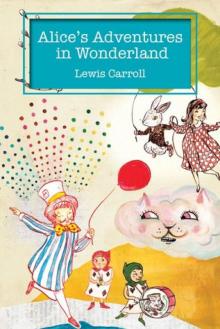 Alice's Adventures in Wonderland & Through the Looking-Glass
Alice's Adventures in Wonderland & Through the Looking-Glass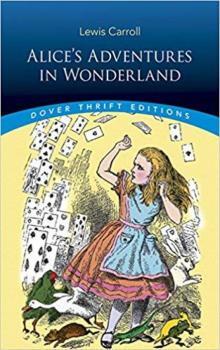 Alice's Adventures in Wonderland
Alice's Adventures in Wonderland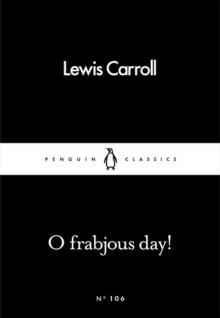 O Frabjous Day!
O Frabjous Day! Jabberwocky and Other Nonsense
Jabberwocky and Other Nonsense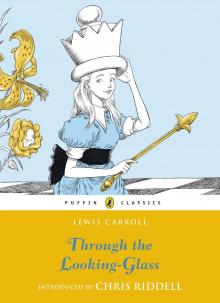 Through the Looking-Glass and What Alice Found There
Through the Looking-Glass and What Alice Found There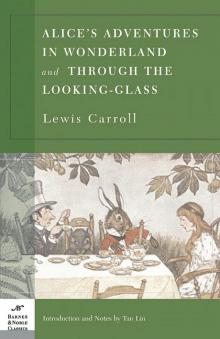 Alice's Adventures in Wonderland and Through the Looking Glass (B&N)
Alice's Adventures in Wonderland and Through the Looking Glass (B&N) Alice's Adventures in Wonderland and Through the Looking Glass (Barnes & Noble Cla
Alice's Adventures in Wonderland and Through the Looking Glass (Barnes & Noble Cla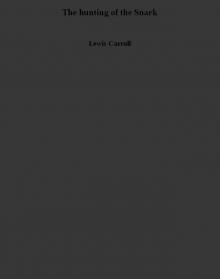 The hunting of the Snark
The hunting of the Snark The Complete Alice in Wonderland (Wonderland Imprints Master Editions)
The Complete Alice in Wonderland (Wonderland Imprints Master Editions)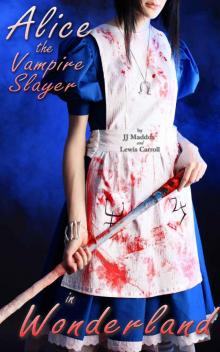 Alice in Wonderland: The Vampire Slayer
Alice in Wonderland: The Vampire Slayer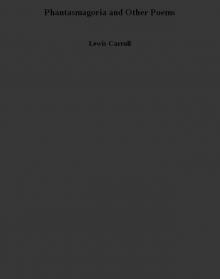 Phantasmagoria and Other Poems
Phantasmagoria and Other Poems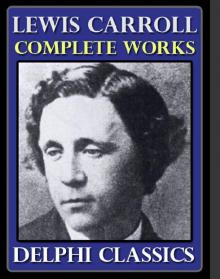 Complete Works of Lewis Carroll
Complete Works of Lewis Carroll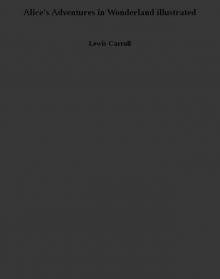 Alice's Adventures in Wonderland illustrated
Alice's Adventures in Wonderland illustrated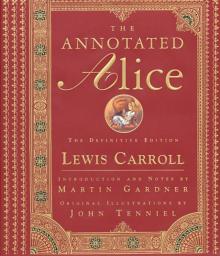 The Annotated Alice: The Definitive Edition (The Annotated Books)
The Annotated Alice: The Definitive Edition (The Annotated Books)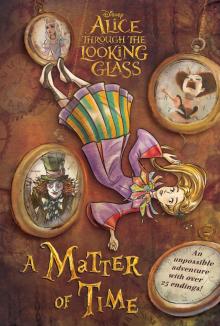 Through the Looking Glass
Through the Looking Glass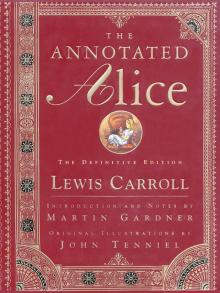 The Annotated Alice
The Annotated Alice Alice in Zombieland
Alice in Zombieland